Americans’ ever growing appetite for snacks!

Snacking has become a very popular habit among the US consumers and the US snacks market has been experiencing considerable growth in the past years, with the sales of snack products reaching up to 44.3bn in 2015. In fact, on average 96% of US consumers snack between meals regularly, occasionally or rarely. As the lines between snack and meal continue to blur to the extent that foods typically considered snacks are replacing the meals, the range of snacks continues to grow comprising meat products, fruits and vegetables, nuts, dairy products and meal-type products in small portion sizes. The multiplication and the large variety of such offerings comes as a response to the contradicting desires of American consumers for convenient nutrition and indulgences.
Although most snacks take place between meals, snack foods eaten as main meals now  represent 24% of all snack food consumption, that’s an increase of 21% over the past five years. It needs to be noted that, according to NPD, 12 billion snack visits have been made to restaurants and other foodservice outlets. When snacking replaces an away-from-home meal, the meal is most often lunch. In fact, 48% of foodservice snack visits occur during the lunch break. The morning snacks represent 23% of foodservice snack visits and the evening ones 30%.
represent 24% of all snack food consumption, that’s an increase of 21% over the past five years. It needs to be noted that, according to NPD, 12 billion snack visits have been made to restaurants and other foodservice outlets. When snacking replaces an away-from-home meal, the meal is most often lunch. In fact, 48% of foodservice snack visits occur during the lunch break. The morning snacks represent 23% of foodservice snack visits and the evening ones 30%.

Which consumers in the US tend to snack more?
 The trend toward eating snack foods in main meals is being driven by Gen Zs and Millennials. Older Gen Zs and Millennials are more comfortable eating alone from previous generations. Snack foods constitute a low cost solution facilitating portion control and portability, thus allowing these consumers to compose an eating occasion that fits their specific needs.
The trend toward eating snack foods in main meals is being driven by Gen Zs and Millennials. Older Gen Zs and Millennials are more comfortable eating alone from previous generations. Snack foods constitute a low cost solution facilitating portion control and portability, thus allowing these consumers to compose an eating occasion that fits their specific needs.
The replacement of meals with snacks is particularly widespread among millennials.  Most Americans between 18 and 35 years old consume a wholesome snack instead of a standard meal at least once a week. 92% of Millennials prefer to snack at least once a week instead of having breakfast. Half of those said they replace a meal with a snack about 4 times a week, while 26% said they do so up to 7 times a week. 39% of the Millennials said they snack because they are too busy to have a sit-down meal, while 17% admitted they don’t feel like preparing a meal.
Most Americans between 18 and 35 years old consume a wholesome snack instead of a standard meal at least once a week. 92% of Millennials prefer to snack at least once a week instead of having breakfast. Half of those said they replace a meal with a snack about 4 times a week, while 26% said they do so up to 7 times a week. 39% of the Millennials said they snack because they are too busy to have a sit-down meal, while 17% admitted they don’t feel like preparing a meal.
Millennials value convenience due to their busy life, so it comes as no surprise that 48% of 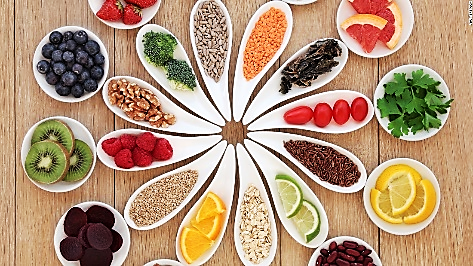 those eat snacks at work and 34% while driving. Furthermore, given their tendency on healthy eating, they expect snacks to contribute to their daily nutrition needs, so they prefer whole food ingredients like wholegrains (43%), real fruit pieces (42%) and nuts (39%). In addition, more than half of those (68%) need to be aware of the origin of the fruit found in snacks.
those eat snacks at work and 34% while driving. Furthermore, given their tendency on healthy eating, they expect snacks to contribute to their daily nutrition needs, so they prefer whole food ingredients like wholegrains (43%), real fruit pieces (42%) and nuts (39%). In addition, more than half of those (68%) need to be aware of the origin of the fruit found in snacks.
Main snacking trends
- Growing appetite for healthy and nutritional snacks. The ongoing consumer tendency
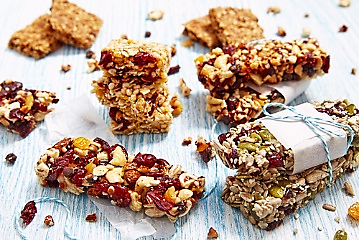 towards more natural foods along with American’s increased aversion to carbohydrates and gluten leads to the increasing popularity of gluten-free snacks with lower amounts of high-fructose, fat, corn syrup and sodium and higher amounts of fiber. Indicatively, US sales of energy and
towards more natural foods along with American’s increased aversion to carbohydrates and gluten leads to the increasing popularity of gluten-free snacks with lower amounts of high-fructose, fat, corn syrup and sodium and higher amounts of fiber. Indicatively, US sales of energy and 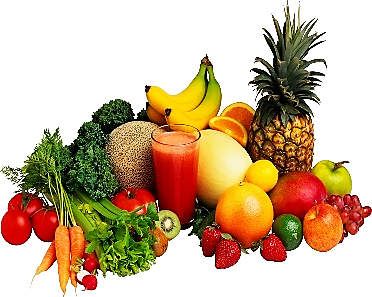 nutrition bars have surged 87.5% to $2.48bn in the five years to 2015, nuts have increased 34.7% to $4.55bn, fruit bars have risen 16.5% to $1.17bn and yoghurt sales have recorded a growth of 26.8% to $8.38bn, according to Euromonitor. US consumers are also shifting towards organic, fresh fruits and vegetables.
nutrition bars have surged 87.5% to $2.48bn in the five years to 2015, nuts have increased 34.7% to $4.55bn, fruit bars have risen 16.5% to $1.17bn and yoghurt sales have recorded a growth of 26.8% to $8.38bn, according to Euromonitor. US consumers are also shifting towards organic, fresh fruits and vegetables. - Booming demand for new, unconventional flavors. US consumers are yearning for new
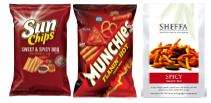 snack flavors with hot, savory and authentic spices from around the world, cheese and herbs. Once again, Millennials are the ones that desire more complex, bold and spicy snacks.
snack flavors with hot, savory and authentic spices from around the world, cheese and herbs. Once again, Millennials are the ones that desire more complex, bold and spicy snacks. - Increasing popularity of salty snacks. The salty snacks market segment has been experiencing a steady growth in the past 5 years (+7%), with sales reaching $22 billionin 2015.
- According to Packaged Facts, 95% of American households stock up on salty snacks, and
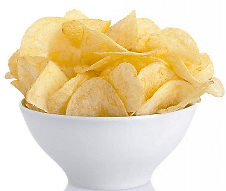 potato chips which are still the most popular, found in 23.7% of US homes. Ready-to-eat popcorn and caramel corn rank as second favorites, and alternative fruit and vegetable (non-potato) chips have been selling well since 2015. Meat snacks are driving growth in the salty snacks category, with sales increasing faster
potato chips which are still the most popular, found in 23.7% of US homes. Ready-to-eat popcorn and caramel corn rank as second favorites, and alternative fruit and vegetable (non-potato) chips have been selling well since 2015. Meat snacks are driving growth in the salty snacks category, with sales increasing faster  than of any other segment (+55%) from 2010 until 2015. Mintel research indicated that US consumers are more likely to look for no artificial ingredients (22%), organic (17%) and high protein (33%) claims on meat snacks than any other salty snack.
than of any other segment (+55%) from 2010 until 2015. Mintel research indicated that US consumers are more likely to look for no artificial ingredients (22%), organic (17%) and high protein (33%) claims on meat snacks than any other salty snack.
 Furthermore, 33% of salty snackers eat salty snacks away from home and 26% of those consume it at work. Parents are among America’s most prevalent salty snackers and are increasingly likely to snack on salty options while on the go (41%), at work (36%) and throughout the day (34%). Mintel research revealed that 35% of parents are indulging in the same salty snacks as their children.
Furthermore, 33% of salty snackers eat salty snacks away from home and 26% of those consume it at work. Parents are among America’s most prevalent salty snackers and are increasingly likely to snack on salty options while on the go (41%), at work (36%) and throughout the day (34%). Mintel research revealed that 35% of parents are indulging in the same salty snacks as their children.
- Despite the rising interest for healthier options, taste outdoes everything when choosing
 salty snacks: 62% of US consumers agree that taste is more important than how healthy a salty snack is.
salty snacks: 62% of US consumers agree that taste is more important than how healthy a salty snack is.
Overall, it looks like snacks aren’t going away any time soon. Busy lifestyle is fostering a culture of grazing and snacks are the perfect answer to grazing. In this context, the need for convenient, nutritional snacks as well as for snacks that provide consumers a sense of indulgence is growing more than ever in the US, with the millennials driving the snackification trend.
This article was exclusively written by DK Consultants for the AMCHAM newsletter
Sources: www.bakeryandsnacks.com, www.npd.com, www.bakingbusiness.com, www.foodprocessing.com, www.mintel.com, www.ft.com, www.packagedfacts.com, www.foodnavigator-usa.com, www.prnewswire.com, www.vendingtimes.com, www.foodbev.com.
